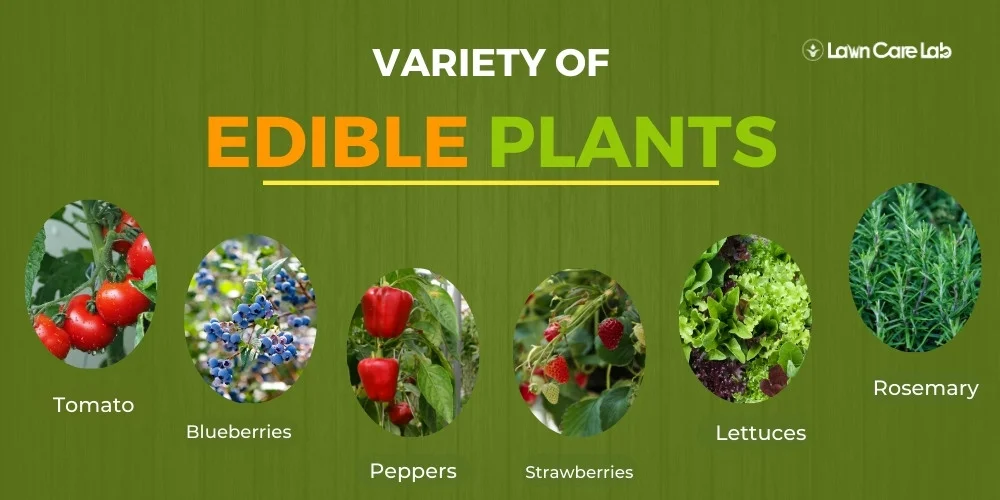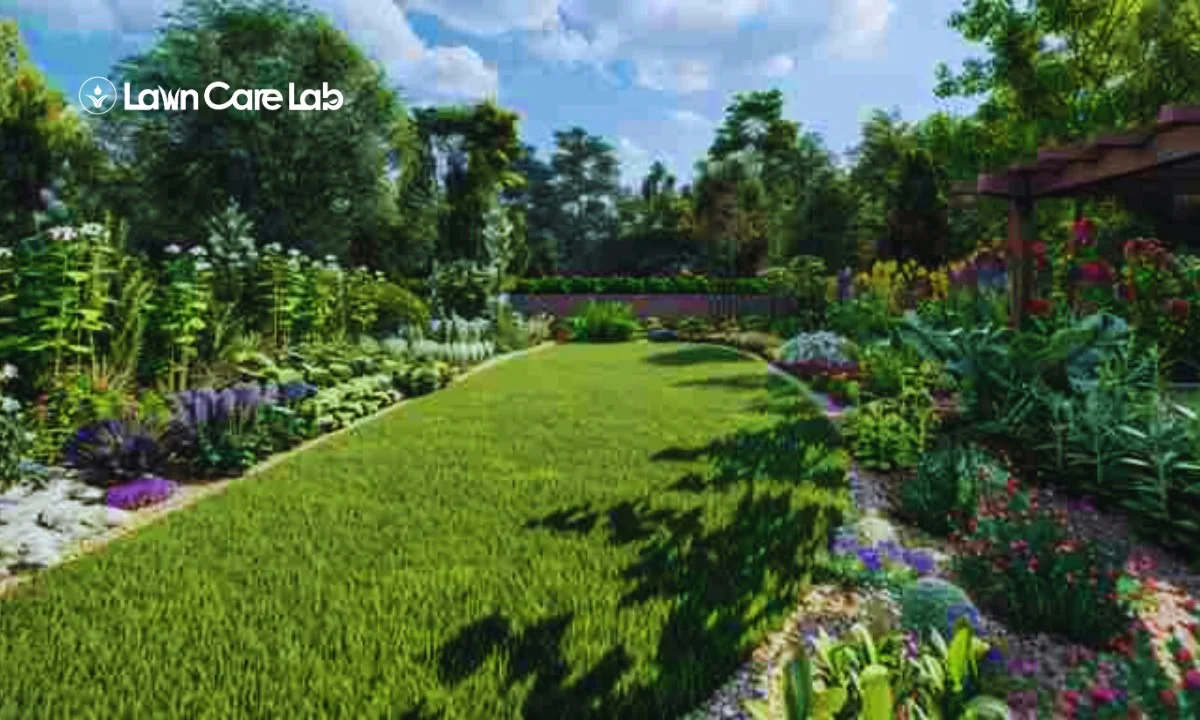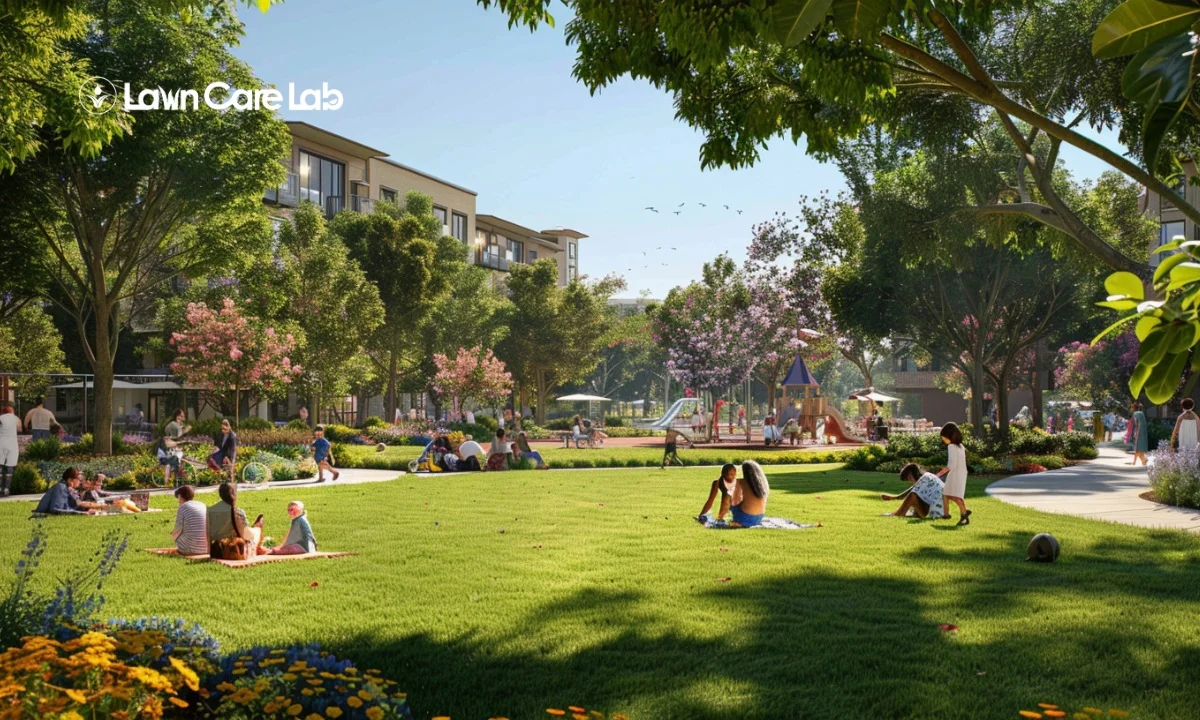In recent years, the concept of the traditional lawn has evolved dramatically. What was once a simple green carpet is now transforming into vibrant, productive gardens filled with fruits, vegetables, and fragrant herbs. This shift towards edible lawns combines the beauty of ornamental landscaping with the practicality of food production, promoting sustainability and self-sufficiency.
In this guide, we’ll explore the rise of edible lawns, covering their history, principles, and benefits. You’ll learn how to plan, design, and maintain an edible landscape that is both beautiful and functional.
Whether you’re an experienced gardener or a beginner, this guide will help you transform your lawn into a bountiful paradise that pleases the eye and nourishes the body.
Table of Contents
History and Evolution
The concept of edible lawns, merging ornamental gardens with food production, has evolved from urban agriculture’s need for productive land use.
This trend has grown into a sustainable landscaping practice that delights both the eyes and the taste buds.
Born from the necessity for efficient land use in cities, edible lawns have become a symbol of sustainability, blending history and modern functionality.
Principles and Concepts
Starting your journey from traditional grass to a bounty of greens involves understanding the principles and concepts that make edible lawns practical and beautiful.
It’s about creating a landscape that satisfies both aesthetic and practical needs.
From the perks of plucking your dinner from the front yard to the nitty-gritty of planning your verdant paradise, we’re about to explore how your lawn can do double duty—satisfying your stomach as much as your sense of sight.
Defining Edible Landscapes
Edible landscapes blend beauty with utility, selecting plants that cater to both. Imagine your garden as a feast for the eyes and a buffet for your table. Edible landscaping turns your outdoor space into a sustainable, flavorful haven where every plant invites closer inspection and maybe a taste.
- Brightly colored cherry tomatoes dangling beside vibrant marigolds
- Crunchy kale peeping through fluffy ferns
- Fragrant herbs lining walkways, whispering secrets of flavor
Edible landscapes encourage a garden design where every plant and flower invites you to take a closer look and maybe a bite. It’s about reimagining your garden as a living pantry.
Benefits of Edible Lawns
Edible landscapes offer tangible benefits to our yards, providing a bountiful harvest of fresh, organic produce right at your doorstep. They promote food security and sustainable living, particularly in urban areas craving a touch of nature.
Planning Your Edible Garden
Creating edible lawns involves weaving together food production and ornamental aesthetics, focusing on diversity, zoning, and sustainable practices. Select plants that thrive in your local climate to ensure a beautiful and bountiful urban garden.
- Imagine a garden where raised beds and vertical gardening structures turn your backyard into a living, edible landscape design.
- Envision polyculture with a blend of edible flowers, herbs, and vegetables, creating a symphony of flavors and colors.
- Composting systems that turn kitchen scraps into valuable garden fertilizer.
This isn’t just gardening; it’s an art form where safety, sustainability, and beauty harmonize.
Designing Your Landscape
Designing with edible plants requires balancing aesthetic appeal and practicality. Integrate edible landscaping and permaculture principles to create a space that is both beautiful and bountiful.
Consider the sun’s embrace, the soil’s embrace, and how water access plays into your green tableau.
Fruit-bearing trees and edible plants aren’t just functional; they’re your landscape’s superstars, mingling with ornamental elements to create a scene that whispers sustainability and shouts deliciousness.
Achieving a seamless integration of these elements into your landscape design transforms your outdoor space into an enviable, edible Eden.
Edible Plants Overview
Choosing various edible plants can transform your lawn into a bountiful feast. From health benefits to cultivation tips, there’s much to explore.

Variety of Edible Plants
When exploring edible plants, you’ll find a variety of fruits, vegetables, herbs, and flowers that can transform outdoor spaces. Edible landscaping is a sustainable approach that combines beauty with functionality.
- Tomatoes bursting with color, beckoning you for a taste.
- Peppers add a pop of vibrant hues and spice to your meals.
- Strawberries nestled among flowers, ready to sweeten your day.
- Blueberries provide juicy, antioxidant-rich treats.
- Lettuces offering crisp, fresh greens for your salads.
- Carrots with their bright orange roots peeking through the soil.
- Basil fills the air with its aromatic scent, perfect for pesto.
- Rosemary adds a fragrant touch to your culinary dishes.
- Nasturtiums with edible flowers and peppery leaves for garnishing.
- Kale brings a nutrient-dense, leafy green option to your garden.
- Chives add a mild onion flavor to your dishes.
- Mint provides a refreshing addition to drinks and desserts.
- Zucchini with its versatile, prolific harvest.
- Raspberries offer a sweet, tangy burst of flavor.
It’s an adventure in your backyard.
Health Benefits
Exploring the world of edible plants exposes a treasure trove of health benefits that can enhance your life in more ways than one. Imagine biting into fresh produce, plucked right from your yard, brimming with vitamins and minerals.
These organic, homegrown delights promise a diet rich in nutrients without worrying about pesticides. You’re not just cultivating plants; you’re nurturing a sustainable, cost-effective lifestyle that’s as kind to your wallet as it’s to the planet.
Plus, the joy of tending to your edible garden is a form of physical activity that benefits both mental and physical health.
Cultivation Tips
To guarantee your outdoor space transforms into a productive landscape brimming with diverse, homegrown food options, consider these essential cultivation tips:
- Soil Preparation: Like setting the stage for an epic plant performance, enriching your soil ensures your edible plants have the perfect foundation for healthy growth.
- Watering: Regularly sprinkle life into your garden. Think of it as a thirst-quenching ritual for your plants, essential for those abundant harvests.
- Maintenance: Keep those pesky weeds at bay and your plants in check; a little TLC goes a long way in cultivating a safe, productive garden paradise.
Garden Maintenance Tips
Imagine your garden beds as mini-ecosystems, with every plant, from ornamental to sustainable edible varieties, contributing to the vibrant tableau.
To keep your edible lawn thriving, it’s vital to follow a few key garden maintenance tips:
For starters, mow your green carpet at a leisurely height of 3-4 inches, which encourages not just deep-root gossip among plants but also throws a fabulous weed suppression party.
Think of it as a deep, meaningful conversation with your plants through drip irrigation, nurturing those strong, drought-defying roots.
Regarding soil health, aerating is like giving the earth a gentle, rejuvenating spa treatment annually.
Lastly, keep an eye out for uninvited guests—pests. A prompt, kind nudge with organic pest management ensures everyone plays nice in your edible landscape.
Harvesting and Utilization
Harvesting from your edible garden merges beauty with functionality, promoting healthy eating habits and self-sufficiency. Imagine:
- Plucking ripe tomatoes and fragrant herbs directly from your yard.
- Creating a salad that’s as fresh as it gets, with edible flowers as the crown jewel.
- Savoring the satisfaction of a meal that’s both sustainable and practically free.
Harvesting and utilizing your edible lawn blends beauty with functionality, encouraging healthy eating habits and self-sufficiency.
Sustainable Practices
Sustainable practices in your edible landscape nurture your garden and fortify the environment for future generations.
| Sustainable Practice | Benefit | How It’s Fun |
|---|---|---|
| Eco-friendly pest control | Protects beneficial insects | Imagine ladybugs as your tiny garden knights! |
| Perennial plant choices | Reduces replanting | Your garden becomes an enduring friend. |
| Mulching techniques | Conserves water, adds organic matter | It’s like tucking your plants in at night. |
Future Trends
Edible lawns are set to redefine urban and suburban landscapes, promising environmental and economic benefits. Imagine a future where:
- Broader agricultural models blooming in every neighborhood.
- Economic growth opportunities sprouting up as edible lawns gain popularity.
- Regenerative practices nurture the soil and community spirit.
Edible lawns blend sustainable practices with whimsical gardening, offering a feast for the eyes and table. The landscaping industry is moving towards greener, tastier futures, planting seeds of change.
Get ready to dig in!
Conclusion
Venturing into the world of edible lawns makes you a culinary explorer, embracing a tradition as ancient as Eden.
Imagine plucking a salad from your front yard, enjoying the labor and the harvest, and surprising your neighbors.
Here’s to turning your green space into a feast for both the eyes and the palate. Bon appétit!
- How to Create a Lawn Care Schedule for Southern Climates - October 30, 2024
- How to Use Compost Tea to Boost Lawn Growth and Soil Health - October 23, 2024
- The Best Grasses for Saltwater-Exposed Lawns: Coastal Lawn Care - October 17, 2024




